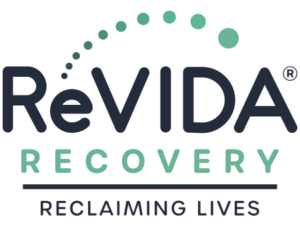
Vicodin® (hydrocodone) is an opioid that has a history of misuse because of the feelings of euphoria and well-being it incites. If you or someone you love is managing an addiction to opioids, it’s important to understand how long they stay in your system. At ReVIDA Recovery, we believe that education is a vital component of quality treatment. Let’s talk about Vicodin® (hydrocodone) so that you can be armed with the knowledge you need.
Table of Contents
How Long Does Vicodin Stay In Your System
Vicodin® (hydrocodone) is different from other opioids because it’s a mixture of both hydrocodone and acetaminophen. This can make it particularly dangerous to misuse because in order for the liver to remain healthy, it needs to filter out each dose of acetaminophen before another is administered. When too much acetaminophen is present in the liver, serious complications can occur. This is a large reason why it’s important to understand how long Vicodin® (hydrocodone) stays in your system.
While the effects of Vicodin® (hydrocodone) are usually only present for 3-4 hours, it can stay in your system for days and even be detected in your hair follicles for up to 3 months after your last dose.
Factors That Affect the Duration of Vicodin in Your System
The amount of time that Vicodin® (hydrocodone) stays in your system is dependent on quite a few factors. Not everyone has the same body type, nor does everyone share the same metabolism. Let’s take a closer look at some of these factors:
- Body fat content. Opioids and other substances can be stored in fat cells, which can keep them in the body for longer. The more someone weighs, the more likely it is that the drug will stick around for a while.
- The health of someone’s liver. Our livers are incredible organs, and their main job is to filter out any toxins we ingest. This includes medication. When the medication passes through the liver, its effects aren’t as potent because the body has begun to break it down. A healthy liver will process Vicodin® (hydrocodone) faster than an unhealthy liver.
- Gastrointestinal health. Any kind of medication needs to be broken down in the stomach before it moves to the liver. Gastric acids can prevent or slow this process down. The content of someone’s stomach along with their PH levels is going to influence how long hydrocodone will stay in the body.
- How much of the medication was taken? The larger the dose of Vicodin® (hydrocodone), the longer it will take to leave the body.
What Is the Half-Life of Vicodin?
Every medication has something called a “half-life.” This is the amount of time that it takes for the strength of the medication to drop by half after it has been ingested. Once the half-life has passed, the feelings of pain relief or euphoria start to fade. For those who misuse Vicodin® (hydrocodone), the temptation to take more often surfaces during this time. However, while it may feel like the medication has worn off, it’s still present in the body. Taking more too soon can become dangerous. The half-life of Vicodin® (hydrocodone) is around 4 hours. People who have been taking it regularly might start to feel Vicodin withdrawal symptoms as early as hour 6.
Duration Vicodin Can Be Detected in Urine
Urine testing is common for Vicodin® (hydrocodone) because it’s accurate and simple. A urine test can detect the presence of opioids up to 4 days after the last dose.
Duration Vicodin Can Be Detected in Blood
Blood tests are not used to detect Vicodin® (hydrocodone).
Duration Vicodin Can Be Detected in Hair
Vicodin® (hydrocodone) can be detected in hair follicles for up to three months after the last dose.
Dangers of Having Vicodin in Your System
When discussing a buildup of Vicodin® (hydrocodone) in the system, one of the more prominent dangers is the buildup of acetaminophen, which can be hard on your liver. Because it takes time for Vicodin® (hydrocodone) to fully leave the system, extended use can cause a myriad of complications. Over time, irreversible scarring, liver failure, respiratory reflex issues, and gastrointestinal issues can surface.
Having Vicodin® (hydrocodone) regularly in your system can also cause problems with dependency, tolerance, and withdrawal symptoms. When the body becomes used to the presence of opioids, it begins to crave them when they wear off. The longer you’ve been taking them, the higher your tolerance becomes, making it so that you need to take more of the medication to feel the full effects.
Withdrawal Systems
Withdrawal can start as soon as 6 hours after the last dose of Vicodin® (hydrocodone) and can last for days or even weeks. Symptoms usually start off as mild and peak around 72 hours. Common Vicodin® (hydrocodone) include:
- Headaches
- Body aches/bone pain
- Depression, anxiety, or paranoia
- Dilated pupils
- Blood pressure fluctuations
- Hallucinations
- Joint pain
- Gastrointestinal distress like nausea, vomiting, or diarrhea
- Cravings
- Mood swings
- Irritability
- Tremors
- Insomnia
- Fatigue
If you’ve been regularly using Vicodin® (hydrocodone), going through withdrawals can be an uncomfortable and unnerving experience. Treatment options are available that can alleviate your symptoms and help you through the withdrawal process. While withdrawal is rarely fatal, it can be tough to manage on your own. Help is available.
Getting Treatment for Vicodin Addiction
At ReVIDA® Recovery, we have seen firsthand how effective, evidence-based treatment can be in eliminating OUD. It doesn’t matter how long you’ve been taking Vicodin® or how impossible it feels to stop right now – recovery is always possible. Let’s talk about some of the Vicodin treatment options we offer here that could be right for you.
Medication-Assisted Treatment (MAT)
While you’re here for MAT, you’ll be closely monitored by a compassionate and knowledgeable staff. Medications are available that can help in alleviating withdrawal symptoms and guiding you safely into recovery. You’ll also have access to resources that can help you on your journey moving forward, including individual counseling, group counseling, and support groups. In an MAT program, we use medications alongside traditional therapy to guide you away from Vicodin® and into a healthy life of recovery.
You’ll also have the option to move forward with our outpatient treatment program. If a higher level of care is warranted, we will provide referrals for a local inpatient or residential treatment program. Your clinician will go over all of your options to set you up for success.
Buprenorphine (Suboxone®) Treatment
Medication-assisted treatment, or MAT, is a safe and evidence-based way to treat OUD. At ReVIDA® Recovery, we support the use of buprenorphine (Suboxone®) because it has been proven to reduce cravings while working to prevent relapse. In order to receive buprenorphine (Suboxone®) treatment, you will have to be opioid-free for 24 hours.
Outpatient Rehab Services
We believe that both individual and group therapy are critical components in the treatment of OUD – especially if you’re looking for long-term recovery. This is a safe and supportive space where you will learn how to manage your triggers and create healthy coping mechanisms. Our behavioral healthcare team is composed of licensed therapists, certified counselors, care coordinators, and peer recovery specialists who are standing by and ready to help. If we can treat your addiction where it started, at its roots, your chance of recovery is greater than if we were to simply treat your withdrawal symptoms.
At ReVIDA® Recovery, we’re standing by to help you reclaim your life from Vicodin®. Recovery is possible, and you can start your journey to wellness whenever you’re ready. To learn more or to schedule an appointment, please call us today at 423-631-0432.
FAQs About How Long Does Vicodin Stay in Your System
What is Vicodin® (hydrocodone) used to treat?
Post-surgical pain, chronic pain, or pain related to an injury.
How does Vicodin® (hydrocodone) affect the body?
Having Vicodin® (hydrocodone) regularly in your system can cause problems with dependency, tolerance, and withdrawal symptoms. Over time, irreversible scarring, liver failure, respiratory reflex issues, and gastrointestinal issues can surface.









